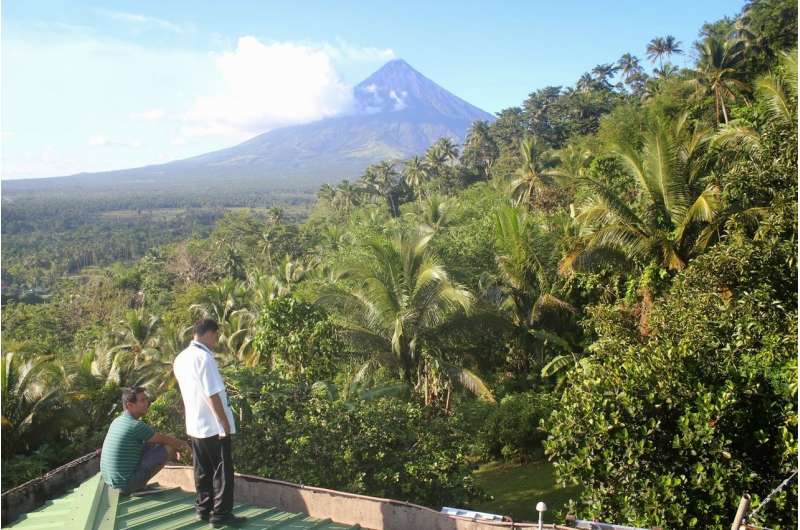Scientists monitor volcanic gases with digital cameras to forecast eruptions

Scientists have shown for the first time that volcanoes emit distinctive pulses of gas a few hours before erupting, which could lead to real-time forecasting of dangerous volcanic eruptions that are difficult to predict, according to the researchers.
Volcanoes emit gases both during and between eruptions. Monitoring the concentrations and amount of gas emitted is important to understanding volcanic activity, but the relationship between periodic degassing and the processes under Earth's surface that trigger eruptions is not clear, according to the researchers.
To better understand this relationship, Tásiro Girona, a geophysicist at the Jet Propulsion Laboratory at California Institute of Technology in Pasadena, California, helped develop a technique that remotely collects images of gaseous volcanic plumes at an unprecedented frequency and precision using readily available digital cameras. Girona presented the results of his technique last month at the 2017 American Geophysical Union Fall Meeting in New Orleans. Initial results show there is a difference between normal degassing between eruptions and degassing just before an impending eruption.
"We really don't need to have more expensive, complex systems," Girona said, referring to the highly specialized equipment scientists typically use to remotely monitor volcanic degassing activity.
Girona and his colleagues are using the digital cameras to monitor volcanic plumes by measuring the light that bounces off water droplets they contain. The intensity of the light corresponds with the amount of water vapor present and is represented digitally by pixel brightness.
For over a year, they have captured images of activity at Turrialba volcano in Cartago, Costa Rica from a distance of one kilometer (0.62 miles). Turrialba is a good candidate for testing the new method, because it displays a broad spectrum of volcanic activity including passive gas emissions during quiescence, ash explosions and sporadic eruptions of ballistics—rock projectiles hurled into the air.
The scientists isolated time windows where the crater was clearly visible that corresponded to observed events like quiescent periods of degassing and the period prior to a ballistic eruption. Each time the volcano emitted gas, they analyzed the digital images to determine how much gas was emitted and what kind of gas it was.
The scientists identified for the first time periodic steam pulses lasting several hundred seconds that occur a few hours before eruptions at Turrialba that hurl rock projectiles into the air. These pulses of steam reflect what is happening inside the volcano, probably in the subsurface gas pockets, to trigger eruptions, Girona said.
"Monitoring the gas changes is one of the most promising tools to be able to anticipate eruptions," said Fidel Costa, a volcanologists at the Earth Observatory of Singapore who was not involved with the project. The work at Turriabla volcano is important because it is the first experiment of its kind to show the difference between the types of degassing and will be useful in anticipating eruptions of other volcanoes that are difficult to predict, Costa said.
Girona is currently extending the analyses to cover longer time periods and different types of volcanic events. Refining and automating the digital camera remote sensing system he and his colleagues developed could allow scientists to monitor and forecast volcanic events in real time, he said. He hopes to expand the method in the future to include the use of satellite images.
Provided by American Geophysical Union
This story is republished courtesy of AGU Blogs (http://blogs.agu.org), a community of Earth and space science blogs, hosted by the American Geophysical Union. Read the original story here.





















